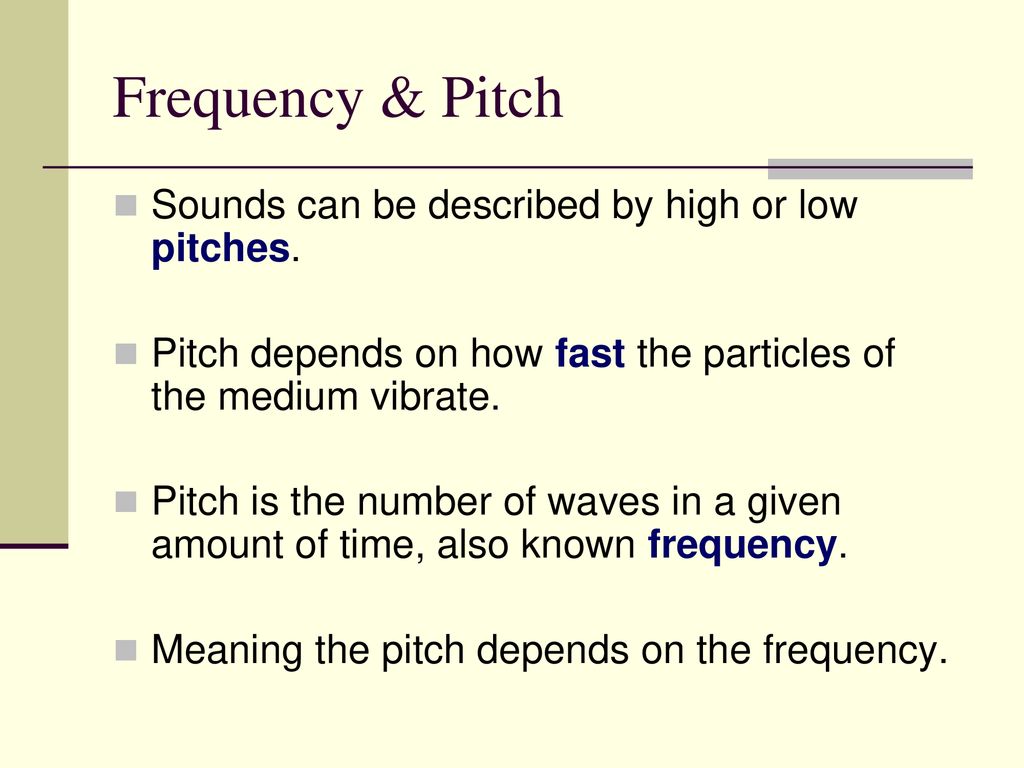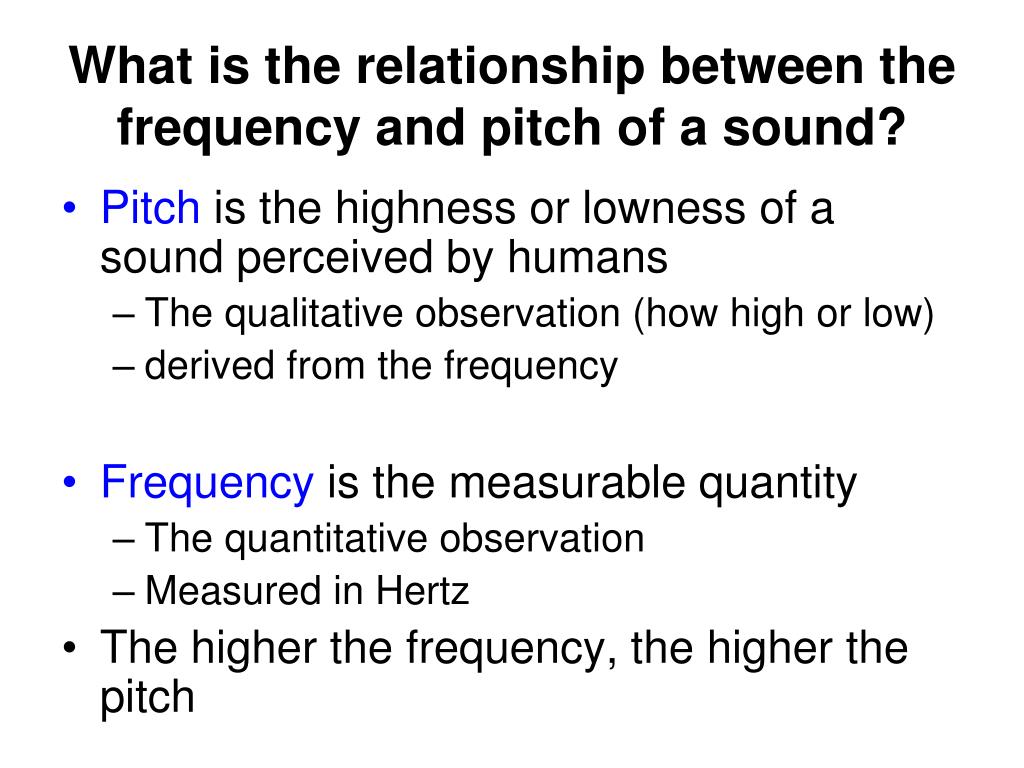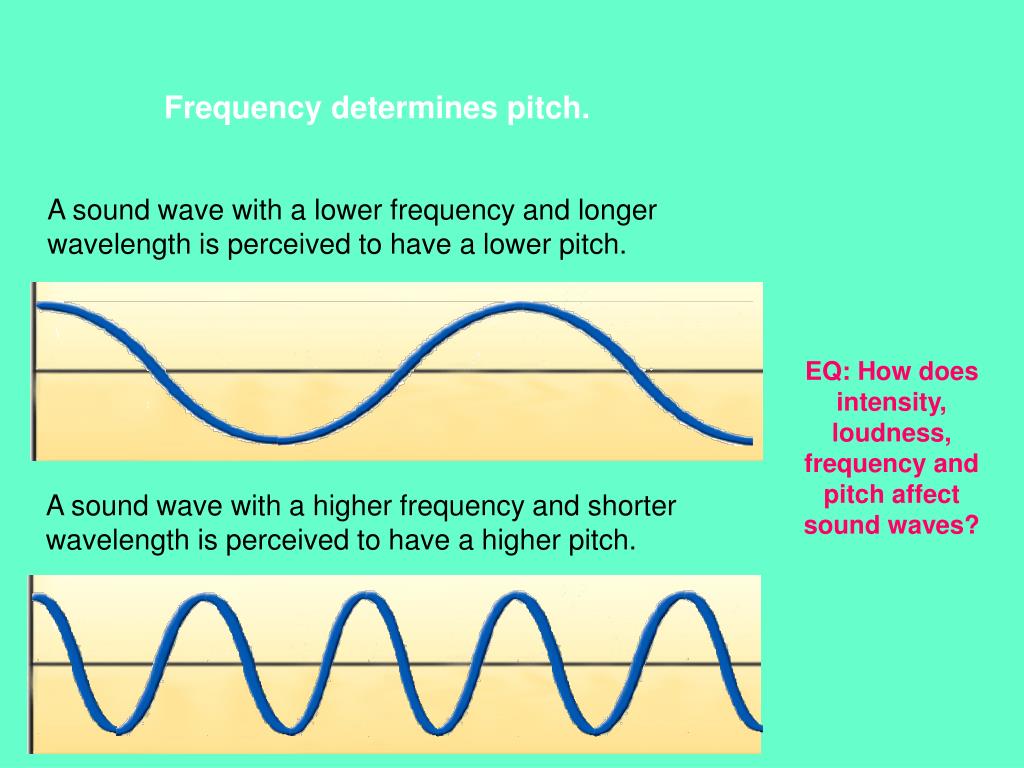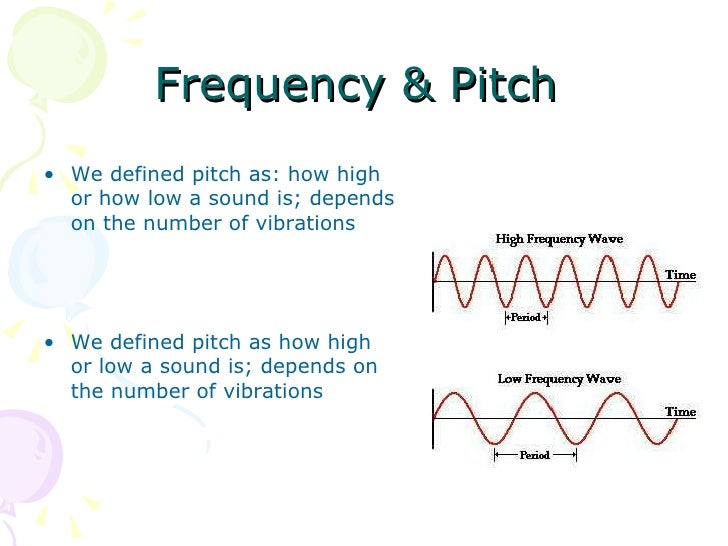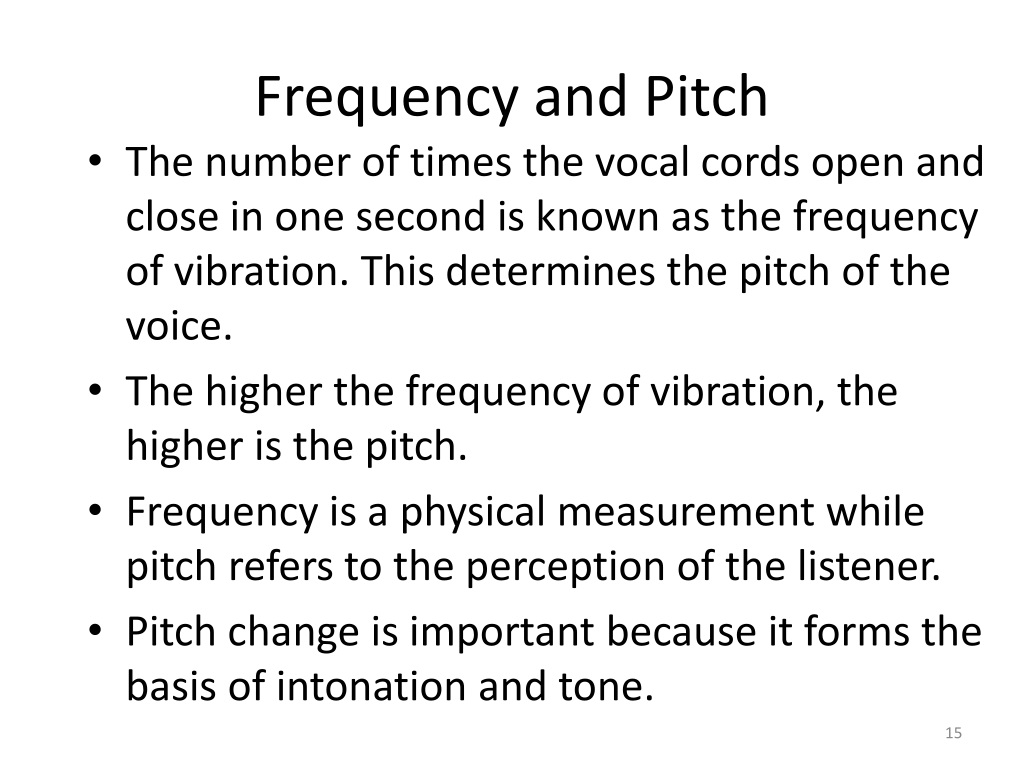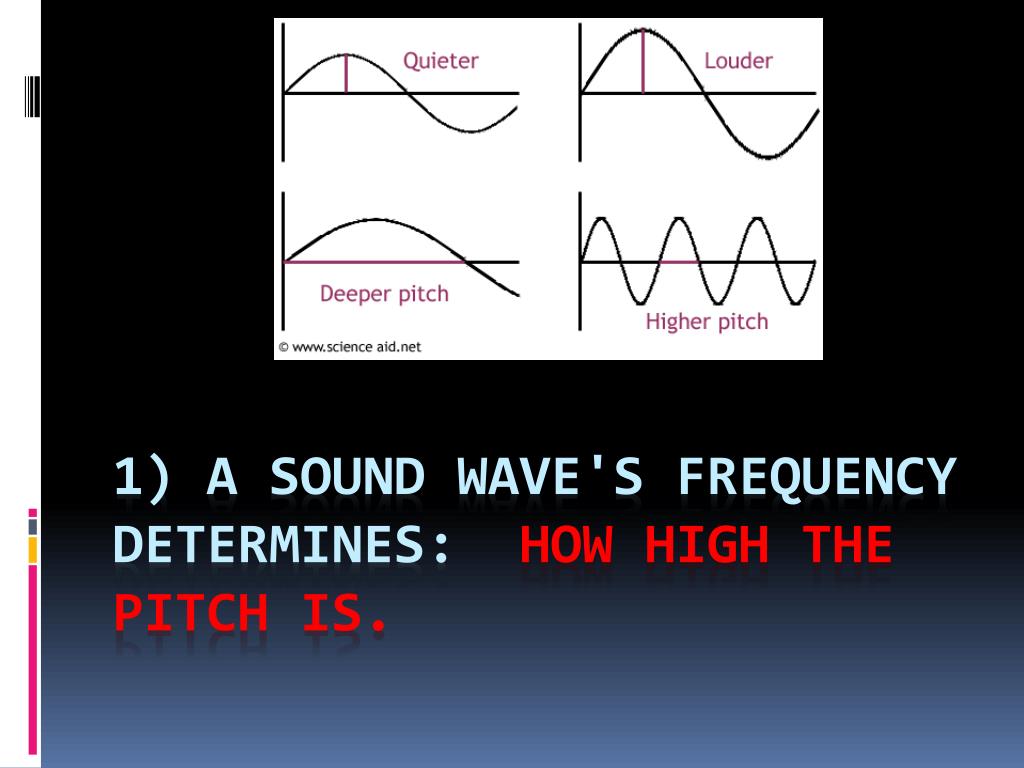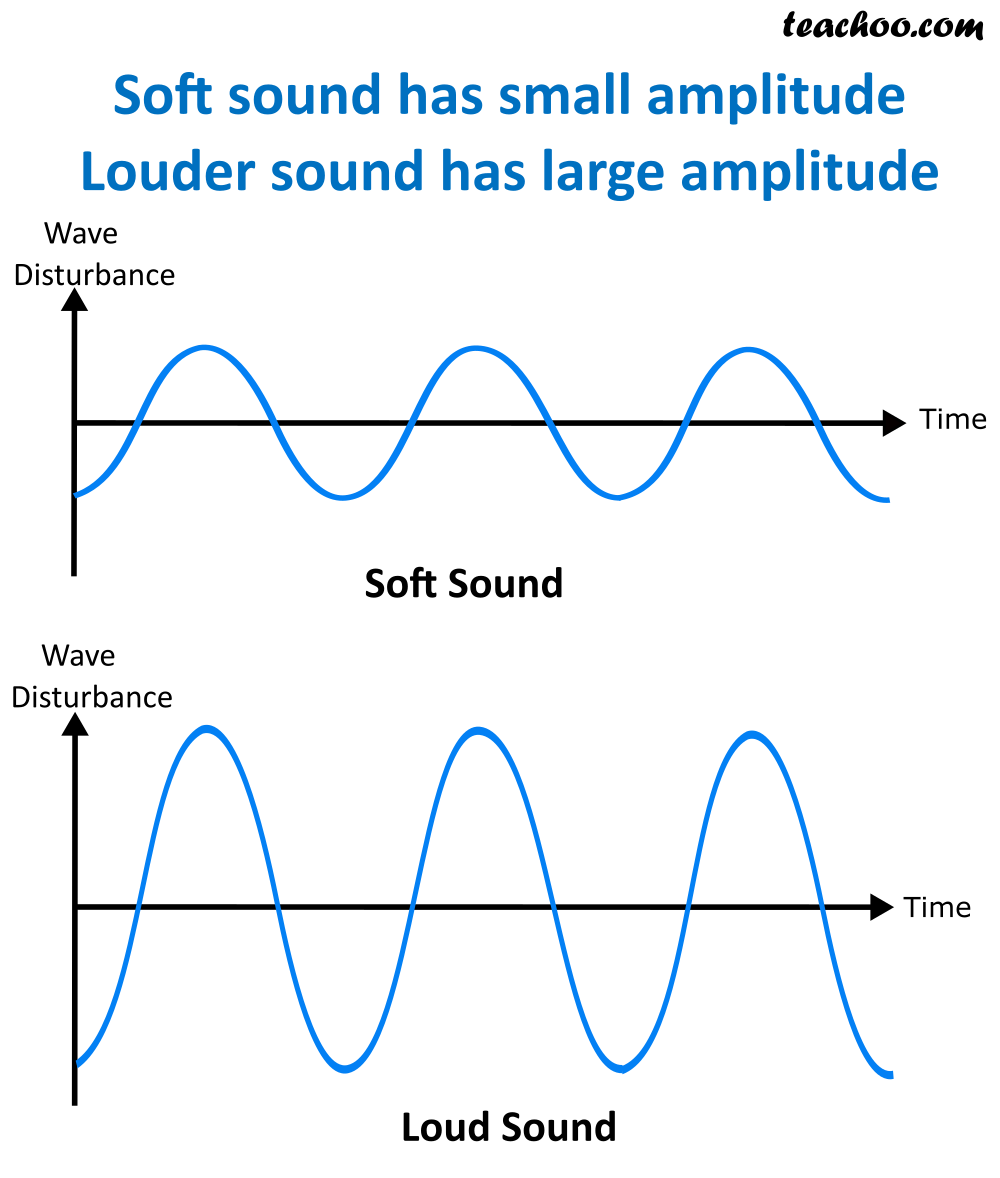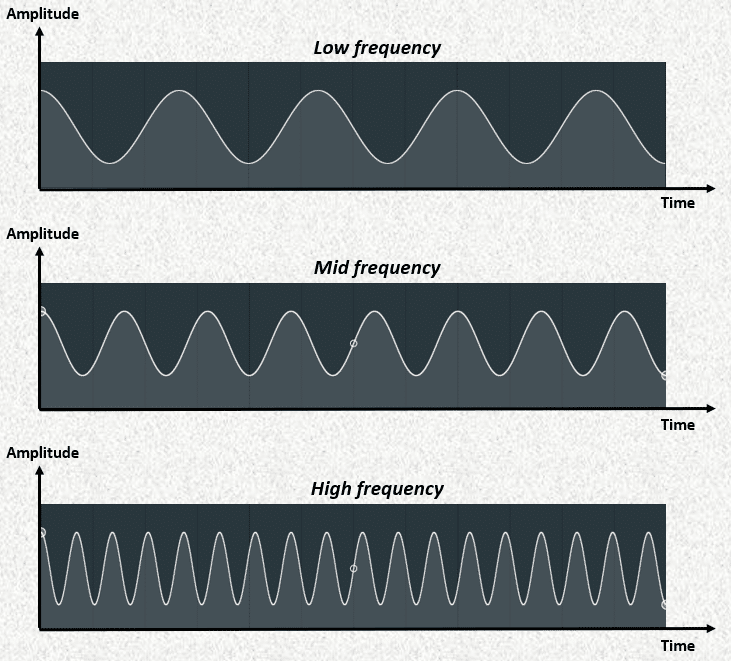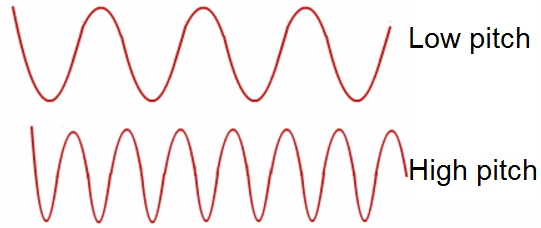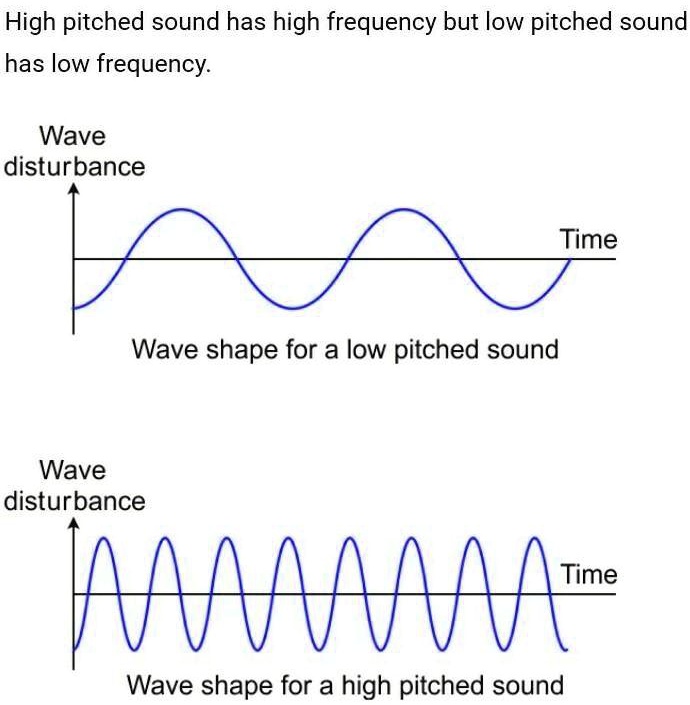In Determining Pitch What Is Meant By Frequency
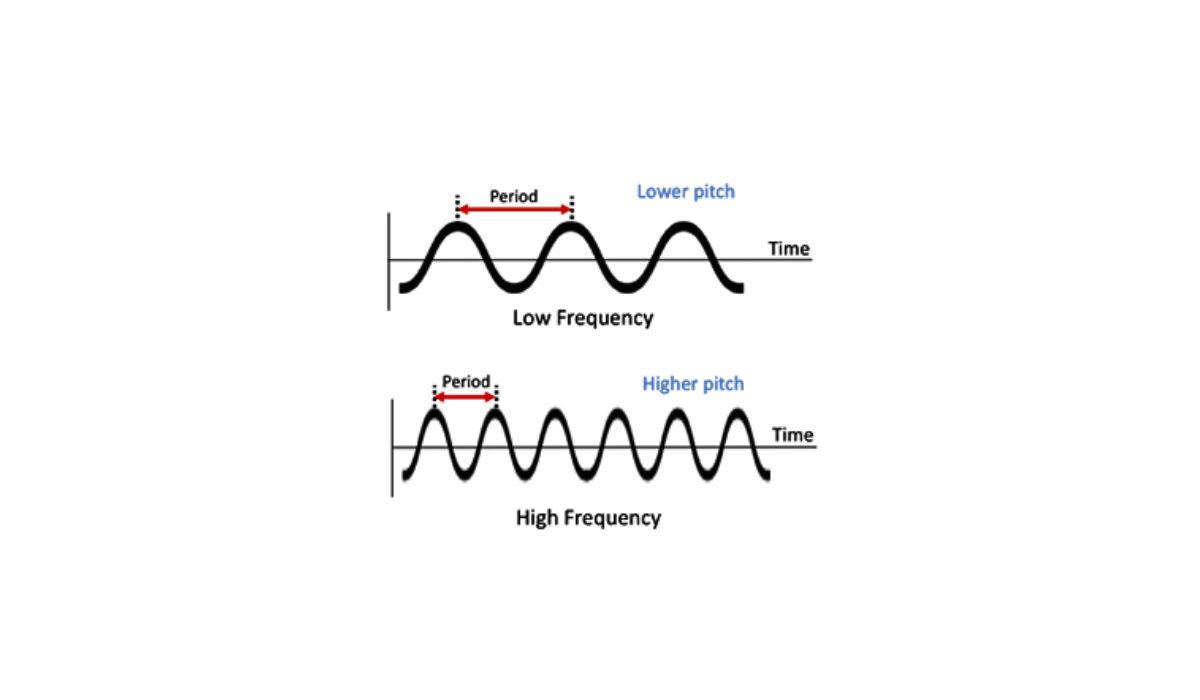
Imagine sitting by a crackling campfire, the air filled with the gentle strumming of a guitar. A melody drifts towards you, some notes soaring high, others rumbling low. What makes those sounds different? What invisible force dictates whether a note tickles your ear or resonates deep within your chest? The answer lies in a fundamental concept: frequency.
At its core, frequency, in the context of pitch, refers to the rate at which a sound wave vibrates. This determines how high or low we perceive a sound, impacting everything from music composition to human speech. Understanding frequency is not just for musicians; it is crucial for fields like acoustics, telecommunications, and even medicine.
The Science of Sound: Vibration and Waves
Sound, as we experience it, is essentially a vibration traveling through a medium, typically air. When an object vibrates – say, a guitar string or your vocal cords – it creates pressure waves that radiate outwards.
These waves are characterized by alternating regions of compression and rarefaction, much like ripples on a pond. Frequency is the measurement of how many of these complete wave cycles pass a given point in one second. It's measured in Hertz (Hz), where 1 Hz equals one cycle per second.
A higher frequency means the waves are oscillating more rapidly, creating a sound we perceive as a higher pitch. Conversely, a lower frequency results in a slower oscillation and a lower perceived pitch. A useful analogy is to think of a hummingbird's wings – the faster they flap (higher frequency), the higher-pitched the buzzing sound they produce.
Pitch Perception: From Wave to Experience
The human ear is a marvel of engineering, designed to detect and interpret these pressure waves. When sound waves enter the ear canal, they cause the eardrum to vibrate.
These vibrations are then transmitted through a series of tiny bones in the middle ear to the cochlea, a snail-shaped structure in the inner ear. Inside the cochlea, tiny hair cells respond to different frequencies of vibration.
Hair cells located near the base of the cochlea are more sensitive to high frequencies, while those near the apex respond to low frequencies. When a specific frequency activates a particular set of hair cells, they send electrical signals to the brain, which interprets these signals as a specific pitch.
The Octave: A Foundation of Harmony
The concept of an octave provides a clear illustration of the relationship between frequency and pitch. When a note is doubled in frequency, it sounds like the same note, but higher in pitch.
For example, the note A4 (the A above middle C on a piano) typically has a frequency of 440 Hz. The note A5 (the A one octave higher) has a frequency of 880 Hz – exactly double. This doubling of frequency creates a sense of consonance and harmonic relationship.
This octave relationship is fundamental to music theory and composition, influencing everything from chord progressions to melodies. Understanding this relationship allows musicians to create harmonious and pleasing soundscapes.
Frequency Beyond Music: Applications in Other Fields
The understanding and manipulation of frequency extends far beyond the realm of music. In telecommunications, for example, radio waves, which are also electromagnetic waves with specific frequencies, are used to transmit information.
Different radio stations broadcast on different frequencies, allowing us to tune into the desired channel. Similarly, Wi-Fi and cellular technologies rely on specific frequency bands to transmit data wirelessly.
In medicine, ultrasound imaging uses high-frequency sound waves to create images of internal organs. The different densities of tissues reflect the sound waves differently, allowing doctors to visualize structures and diagnose medical conditions.
Even in pest control, ultrasonic devices emit high-frequency sounds to repel insects or rodents, disrupting their communication and navigation abilities. These examples illustrate the wide-ranging applications of understanding and manipulating frequency across various scientific and technological fields.
The Human Range: Limitations and Variations
While sound waves can exist across a broad spectrum of frequencies, the human ear can only perceive a limited range. The generally accepted range of human hearing is from 20 Hz to 20,000 Hz (20 kHz).
However, this range can vary significantly from person to person and tends to decrease with age. Older adults often lose the ability to hear high-frequency sounds, which is why they may have difficulty hearing certain consonants in speech or high-pitched musical instruments.
Exposure to loud noises can also damage the hair cells in the inner ear, leading to hearing loss and a reduced range of frequency perception. This is why protecting your hearing by using earplugs or limiting exposure to loud sounds is crucial for maintaining good auditory health.
The Future of Sound: Exploring New Frontiers
Our understanding of frequency continues to evolve, leading to exciting new developments in various fields. Researchers are exploring the use of sound waves for therapeutic purposes, such as using focused ultrasound to deliver drugs directly to cancerous tumors.
In music, composers and sound designers are pushing the boundaries of sonic exploration, creating immersive experiences that utilize a wider range of frequencies and spatial audio techniques. The development of new technologies, such as virtual reality and augmented reality, is also driving innovation in the field of acoustics.
By understanding and manipulating frequency, we can create more realistic and engaging auditory experiences, improve communication technologies, and develop new medical treatments. The possibilities are vast, and the future of sound is ripe with potential.
In Conclusion: The Symphony of Understanding
The concept of frequency, at its essence, is about understanding the vibrations that shape our world and influence our perception of reality. From the gentle hum of a refrigerator to the soaring notes of a symphony, frequency is the invisible thread that connects us to the auditory landscape.
By appreciating the science behind pitch, we gain a deeper understanding of music, technology, and even the intricacies of the human body. So, the next time you hear a beautiful melody or marvel at the clarity of a phone call, take a moment to appreciate the power of frequency – the fundamental building block of sound.
It is more than just a scientific measurement; it's the key to unlocking the symphony of the universe around us.
